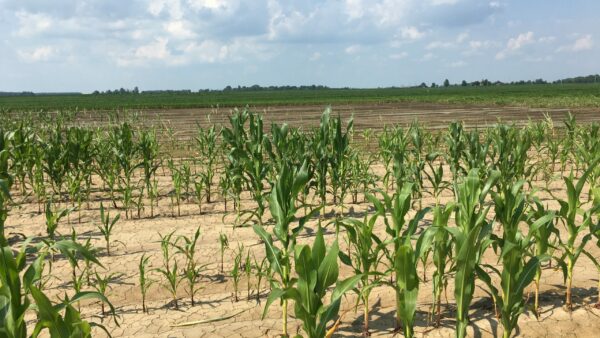Demand for canola oil has skyrocketed with the introduction of high oleic varieties some years ago, but will high oleic soybeans give it a run for its money?
The canola industry has truly been transformed in recent years with the introduction of high oleic varieties, but canola breeders are not sitting on their laurels — especially with high oleic soybeans on the horizon.
In the wake of trans fats and hydrogenated oils being phased out in the global food industry, the creation of high oleic (HO) canola oil, with its low saturated fat content (about 7 per cent) and some omega fatty acids, was very timely. These days, HO oil is used extensively by food product manufacturers and fast food chains, highly prized for its clean flavour and the way it leaves food textures unchanged. It is also an extremely stable oil that can be used for frying over a long period of time.
While there isn’t a strong industry focus on further enhancing the oil profile of HO canola according to Curtis Rempel, vice president of crop production and innovation at the Canola Council of Canada, there is a little breeding activity still happening. Cargill, for example, has been developing an HO canola oil with a very low level of saturated fat, about 4.5 per cent. The firm’s canola R&D director, Lorin Debonte, says it has a monosaturated fat profile similar to that olive oil. For its part, Monsanto says it’s relatively new to the HO arena and is currently finalizing its long-term plans.
Where the HO canola breeding focus seems to lie these days is in efforts to defend it against the possible introduction of HO soybean varieties in Canada. It’s all about adding better resistance to disease, lower pod shatter rates and making other improvements to existing HO canola varieties, says Rempel, “to make sure they are the best-performing, agronomically.”
Dow AgroSciences, for example, is working to improve its locally adapted HO canola varieties, making yield and resistance to clubroot and blackleg as high as possible, says the company’s grains & oils commercial leader, David Dzisiak. He points out that there is still a high potential for HO canola to further displace soybean oil and corn oil use in many food applications.
“Ten years ago, there was only about 2 billion pounds of canola oil used by the North American food industry and today it’s 4.5 billion pounds,” Dzisiak explains. “The demand for oils to make more ready-to-eat foods and snacks is not slowing down.”
HO soybeans have been grown in the U.S. now for many years, and acreage will likely range from 1 to 2 million acres in 2018, says Phil Kerr, president of food industry consulting firm SERIO Nutrition Solutions in St. Louis, Missouri. He says industry estimates suggest that within the next five years or so, HO soybean acreage could rival the acreage of all of the canola produced in Canada in 2017.

The two major variety lines that will be grown in the central U.S. region in 2018 are Dupont Pioneer’s Plenish and Monsanto’s Vistive Gold. Kerr says “their oleic acid profile composition is quite similar to HO oils from canola and other HO oilseeds, yet HO soybean oils offer improved flavour stability and the potential for lower price.”
He notes that it’s taken about 20 years to commercialize HO soybeans due to both long regulatory timelines for GM soybeans and the need for the U.S. food industry to urgently address the government order to stop using hydrogenated oils. “This led to substantial efforts to reformulate oils through blending of oils to achieve higher stability and suitability for use in food manufacture,” Kerr says.
In comparison, Kerr says HO canola achieved regulatory approval much earlier due in part to the comparative ease of making genetic enhancements, and also because it didn’t face the anti-GMO consumer acceptance environment that HO soybeans (made through transgenic biotech methods) have faced.
As to when or whether Vistive Gold will be available in Canada, Monsanto says it will decide on that once it achieves regulatory approval in China. Canadian commercialization would require an interested crushing plant, says the firm’s Canadian public and industry affairs director, Trish Jordan. She adds that Eastern Canada might potentially offer a unique opportunity for Vistive Gold because many growers already produce identity-preserved (segregated) soybeans there.
Dupont Pioneer says it will continue to evaluate market opportunities for its Plenish HO soybean varieties and hopes to introduce them in Canada at some point. Product manager Brian Buckallew says downstream demand for these varieties continues to increase, pending processor contracting opportunities and product performance.
Up with Omega
The canola industry also has a current breeding focus on producing varieties with increased Omega 3 and EPA/DHA fatty acids, “as a plant-based system,” notes Rempel, “to preserve global fish stocks.” These fatty acids are important for circulatory and brain health, and can be found in salmon, mackerel and other oily fish, as well as in flax, hemp and other oilseed crops.

Cargill and BASF Plant Science are currently co-developing canola varieties in this vein. Debonte reports that “as the public becomes more aware of the heart health benefits of EPA and DHA Omega-3s, significant growth in demand is forecast. This next generation of canola oil will allow food and feed companies to affordably offer [these fatty acids] in a wide variety of products.”
Nuseed (of parent company Nufarm) has also developed a DHA-rich Omega-3 canola variety using genes from microalgae, and has submitted applications for its regulatory approval in Canada, the U.S. and Australia (the company also offers HO canola.)
“One hectare of our Omega-3 canola has the potential to provide the same amount of Omega-3 oil as would be extracted from 10,000 kg of fish,” says Nuseed global general manager innovation & strategy, Andy Thomas. “It will help in meeting the growing global demand for increased Omega-3 consumption.”
However, while Dzisiak acknowledges that there is some interest in higher Omega fatty acid canola oil for both human health markets and as an ingredient in fish food, he points out that these traits (as well as extra-low saturated fat content) are niche ‘small-acre’ traits, currently amounting to only hundreds of thousands of acres in North America. High Omega-3 canola, he notes, also has to be grown separately from commodity canola, which involves strict production practices.
Dzisiak predicts that in commodity canola, higher protein meal is the next big thing in terms of breeding activity and acreage growth. Canola meal is already fed to dairy cattle, he says, and there are opportunities to expand its use as a feed ingredient for swine, poultry and farmed fish.












